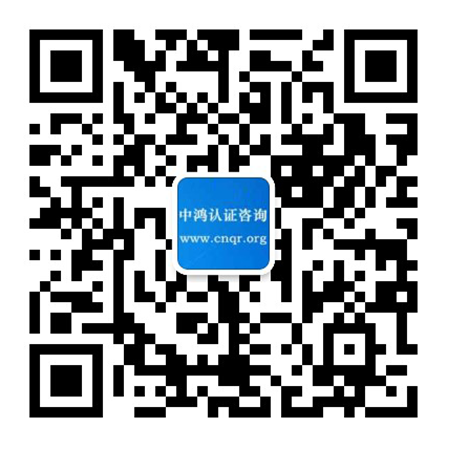专家指尚无一项中药通过美国FDA
There is a traditional Chinese medicine expert refers to through the United States FDA
新华网沈阳11月12日电 中国医药界一些权威专家向记者表示,中药进入美国市场仍然面临重重困难,中药国际化进程并不乐观,将是一个长期的过程。
Xinhuanet.com Shenyang in November 12, Chinese medicine some authoritative experts to reporters, Chinese traditional medicine enters American market still faces heavy difficulty, the internationalization process of Chinese medicine is not optimistic, it will be a long process.
正在举行的“第三届中国(本溪)生物医药高新技术交易会暨中国药都健康养生博览会”上,中国工程院院士李连达在会上表示,迄今为止,还没有一种中药通过美国食品和药品管理局(FDA)的认证而进入美国市场,中国人所期盼的中药走向世界为全人类服务的愿望,短期内仍很难实现。
Being at the "Third China ( Benxi) bio-pharmaceutical high-tech trade fair & China medicine health exposition" on, Chinese Academy of engineering, Li Lianda said at the meeting, to date, has not been a kind of Chinese traditional medicine by the United States Food and Drug Administration ( FDA ) certification and enter the American market, Chinese look forward to traditional Chinese medicine to the world for the service of humanity 's desire, the short term is still difficult to achieve.
据了解,目前中国有复方丹参滴丸、血脂康等10种中药处方药正式向美国FDA申请检测认证,其中有7种进入二期临床试验,其余3种正启动一期临床试验。
Reportedly, at present China has compound Danshen dripping pills, Xuezhikang etc 10 kinds of Chinese traditional medicine prescription drug formally to the United States FDA application certification testing, of which there are 7 enter the two phase of clinical trial, the remaining 3 are initiated a phase II clinical trial.
据李连达介绍,从二期临床进入三期临床的淘汰率高达四分之三,这10种中药中,如果最终能有1至2种成功通过,就已经是很了不起的进展了。
According to Li Lianda, from phase two clinical into phase three clinical elimination rate is high up to 3/4, these 10 kinds of traditional Chinese medicine, if can have 1 to 2 successfully passed, had great progress.
出席会议的一些医学专家认为,中药很难进入欧美主流市场,其中也有自身原因,主要是中药治病机理模糊,国际医学界争议较大。例如中国治疗感冒的中成药有100多种,但哪一品种疗效更好,说不清楚,病人买药、医生开处方,大多凭经验,缺乏一定的科学依据。
Attend the meeting some medical experts believe that, traditional Chinese medicine is difficult to enter the European and American mainstream market, which also has its own reasons, mainly Chinese medicine cure mechanism of fuzzy, the international medical community disputes. For example, China in the treatment of common cold medicines have 100 a variety of, but which a variety of better curative effect, say not clear, the patient to buy medicine, a doctor's prescription, mostly depends on experience, lack of scientific basis.
依据西方医药标准来清晰阐述中药的治病机理,对中药临床效果进行科学的比较分析,对于解决中药国际化难题具有重要意义。
According to the western medicine standards to articulate Chinese medicine treatment mechanism of Chinese medicine, clinical effect for scientific comparative analysis, to solve the problem has important significance to the internationalization of traditional Chinese medicine.
海关数据显示,近年来中国中成药贸易逆差额增势扩大,2010年中国中成药出口为1.93亿美元,而进口2.18亿美元,逆差为0.25亿美元。
According to customs statistics, in recent years Chinese medicine trade deficit has been expanded, 2010 Chinese medicine exports was 193000000 US dollars, while imports of US $218000000, deficit of $25000000.
天津药物研究院名誉院长、中国工程院院士刘昌孝认为,中国已成为世界最大的原料药出口国,但医药创新能力不强,一些外国生产的洋中药水平反而超了中国本土产品。因此必须静下心来,扎扎实实做好中药研发和临床研究。
Tianjin Pharmaceutical Research Institute, honorary president of the Chinese Academy of engineering, Liu Changxiao thinks, China has become the world's largest exporter of raw material medicine, but medicine innovation capability is not strong, some foreign production of modern Chinese traditional medicine level instead of the Chinese native products. So we must calm down, do a solid job in research and development of traditional Chinese medicine and clinical research.
中国医药界有关科学家认为,中药是世界医药宝库的重要组成,其独特治疗优势决定了仍有广阔的市场前景。中国中药企业应该加大国际市场开拓力度,加速从被动国际化到主动国际化进程,为全人类健康服务
Chinese medicine related scientists think, traditional Chinese medicine is the treasure of world medicine is the important component, its unique therapeutic advantage decided to still have broad market prospects. Chinese enterprise should increase the international market to develop strength, accelerate the internationalization process of internationalization from passive to active, for human health services
专家指尚无一项中药通过美国FDA
发布时间: 2011-11-18 16:49 点击:
热门
- iso什么意思ISO代表什么
- ISO认证-致第39届ISO(国际标准化组织)大会贺信全文
- ISO认证证书上常见的认可标志CNAS、UKAS、ANAB、IAF、IATF、IQNET等是什么意思
- ISO认证 确定推进质量认证体系建设的措施,加强事中事后监管提升中国制造品质
- ISO认证 使用失效ISO认证证书(证书处于暂停、撤销、注销状态)是否违反相关法律规定
- ISO是什么的简称
- ISO认证咨询服务网2024年度认证人员招聘计划
- ISO认证证书上的IAS标志是什么意思?IAS是什么的缩写?
- ISO?什么是ISO?ISO认证多少钱?ISO认证价格
- QQ群 企业管理QQ群 ISO内审员免费培训交流QQ群 微信群 持续增加中 中鸿认证咨询交流合作平台
最新
- 某电梯公司ISO认证证书过期5年仍继续使用,最终被举报罚款11280元
- ISO认证机构(ISO认证公司)被注销/撤销,那企业的ISO认证证书还有效吗
- 办理ISO认证需要那些费用呢?不要被坑-ISO认证价格综述
- 质量认证也叫合格评定,是国际上通行的管理产品质量的有效方法
- ISO/TC249(国际标准化组织中医药技术委员会)秘书处在上海举办了2024年开放周活动
- 企业如何通过认证机构ISO认证审核,提高企业综合实力
- 认证体系-加快推动建设低空装备第三方检测认证体系
- ISO(国际标准化组织)和IEC(国际电工委员会)发布两项重要国际标准
- ISO动态-关于积极参加征集ISO/TC307区块链国际标准提案的函
- ISO动态-ISO/TC249(国际标准化组织/中医药技术委员会)秘书处举办了2024年开放周活动


